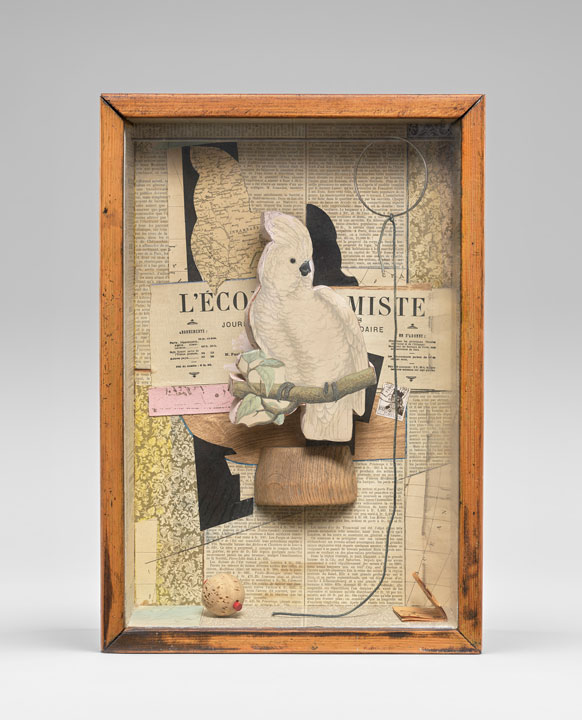
The National Gallery of Art announced a historic gift of 20 box constructions and 7 collages by Joseph Cornell, one of the most important figures of 20th-century art, from Robert and Aimee Lehrman.
This transformative gift, joining four boxes, eight collages, and several other works already in the National Gallery’s collection, makes the museum one of the world’s leading repositories of Cornell’s art. Some 35 years in the making, the Lehrman collection was inspired both by renowned curator Walter Hopps, who introduced Robert Lehrman to Cornell’s work, and by the Lindy and Edwin Bergman Joseph Cornell Collection at the Art Institute of Chicago. The Lehrman collection includes boxes from all of Cornell’s major series as well as the collages that concluded his career. Beginning January 18, 2024, several box constructions and collages from this gift will be on view in the East Building’s Upper Level galleries.
“The National Gallery is thrilled to receive this remarkable gift from Robert and Aimee Lehrman, which significantly enhances the museum’s collection of modern art and will also engage visitors and inspire wonder and awe for years to come,” said Kaywin Feldman, director of the National Gallery of Art. “Together with the Smithsonian American Art Museum, which houses the vast Cornell archive of source materials and notes for the boxes, collages, and films, this gift to the National Gallery now makes Washington, DC, the world’s leading destination for Cornell scholars, students, and art lovers.”
“This remarkable, world-class gift instantly makes the National Gallery an indispensable site for anyone wanting to appreciate and study the art of Joseph Cornell, one of the most unusual and influential American artists of the 20th century,” said Harry Cooper, senior curator and head of the department of modern and contemporary art at the National Gallery of Art. “Cornell’s works are delicate, precious worlds unto themselves, and we are honored to preserve, study, and display this meticulously assembled collection of his art for posterity.”
“One of art’s greatest powers and enduring qualities is that it speaks to us through time, about the continuum of creativity and culture. I know of no better place for Cornell’s art than the National Gallery of Art, where Cornell’s work will join and speak to some of the greatest art of all time,” said Robert Lehrman.
Working closely with the National Gallery, Robert Lehrman selected works to donate that represent the full range of Cornell’s subjects and themes. Several of the boxes relate to specific artists and artworks in the National Gallery’s collection, such as Variétés Apollinaris, which includes a reproduction of the ballet dancer from Pablo Picasso’s painting Family of Saltimbanques (1905). The works in this gift make powerful connections to cubism and surrealism as well as to the more recent practices of assemblage, combine, and neo-Dada, locating Cornell as a central figure and bridge between modernism and contemporary art.
Among the outstanding works in this collection of highlights is A Parrot for Juan Gris (1953–1954). This box is one of the last and most satisfying examples of the so-called Aviaries, a major series Cornell began in 1943, inspired by a pet-store display, and then focused on from 1949 to 1954. Deploying collaged maps, newspapers, and printed illustrations as well as such objects as a cork ball, a metal ring, and a piece of string, here Cornell conjures a range of themes and associations including nobility and captivity, attention and patience, travel and study, and play and meditation. The central figure of the white parrot serves as a surrogate for our own activity as beholders and (virtual) manipulators of the box itself. The titular reference to Gris, one of Cornell’s favorite painters, is evident in his use of black shadows, cutout silhouettes, and jigsaw-puzzle composition that also characterizes Gris’s painting Fantômas (1915), one of the keystones of the National Gallery’s modern collection.